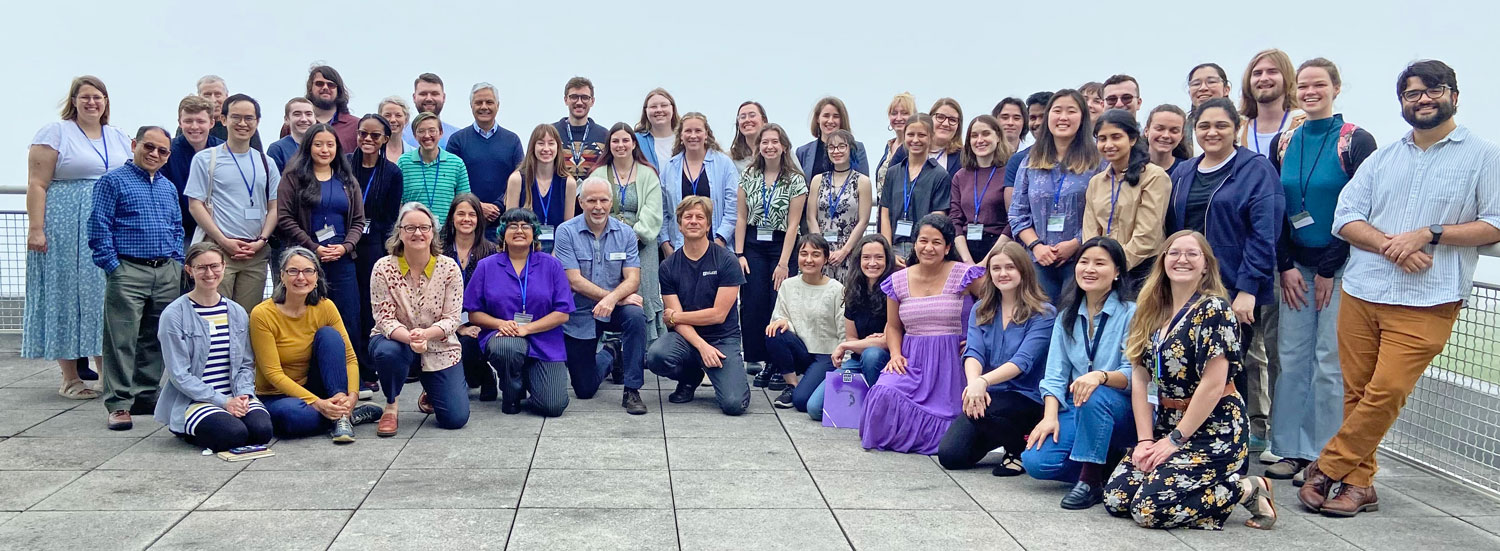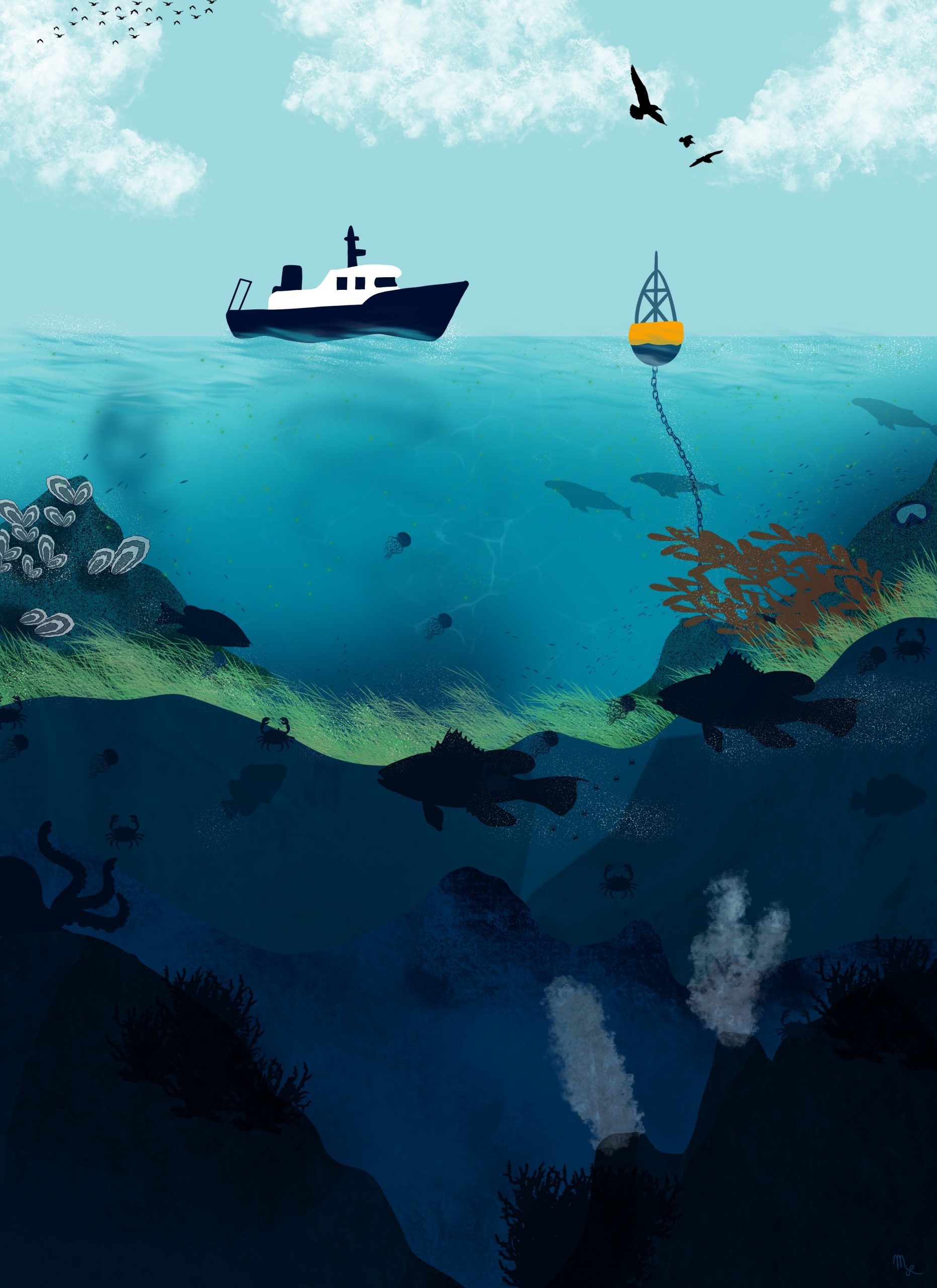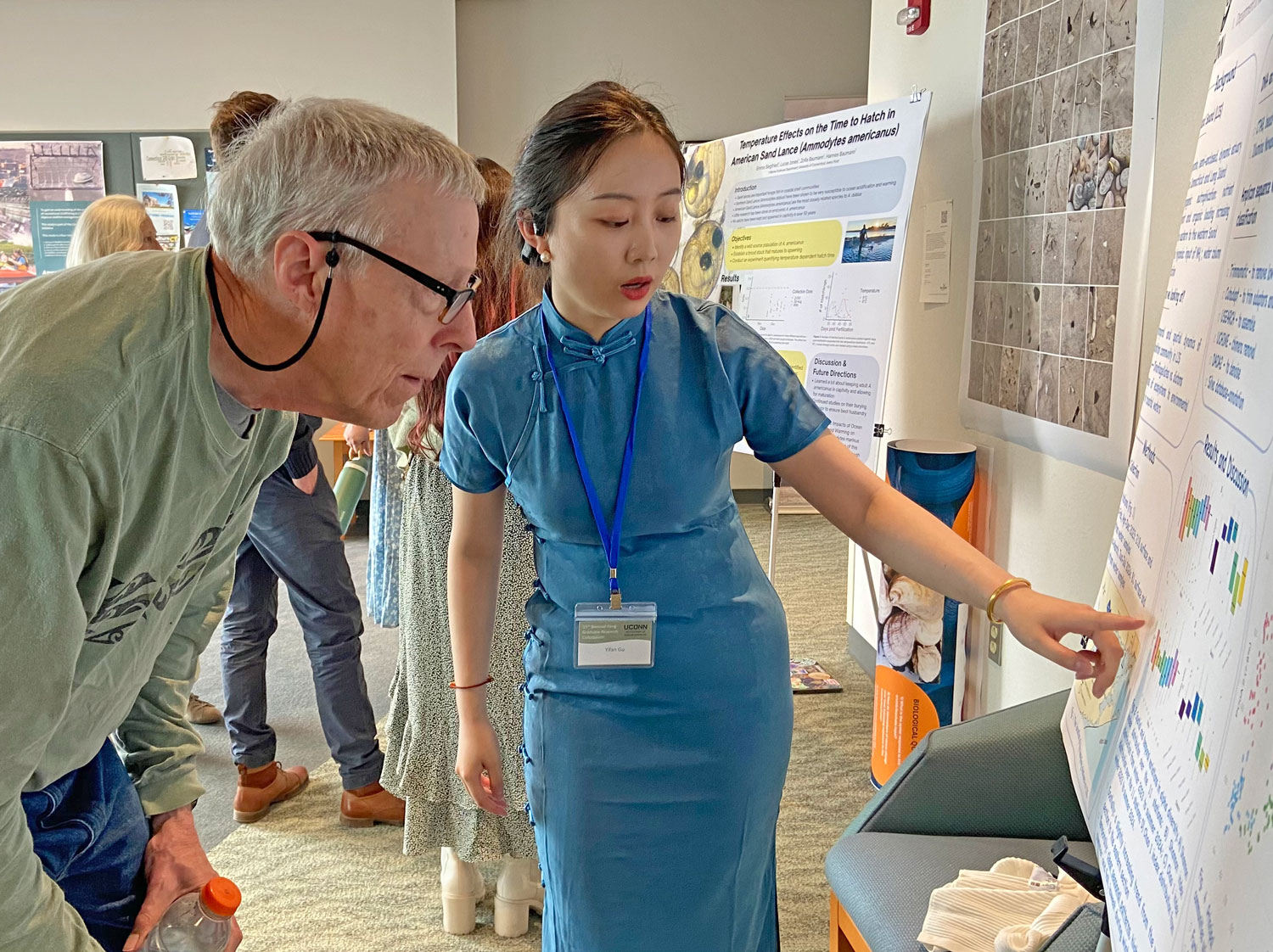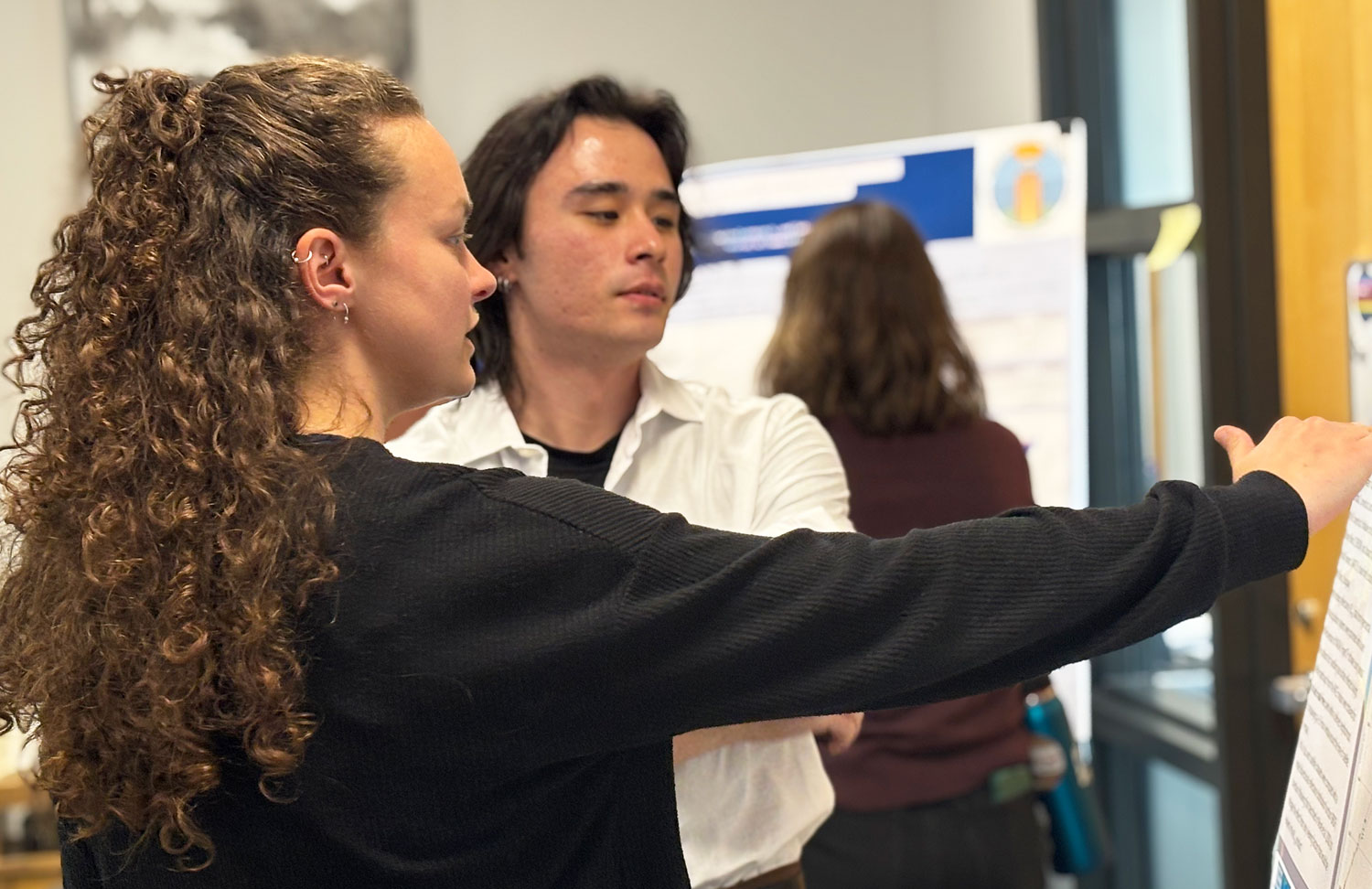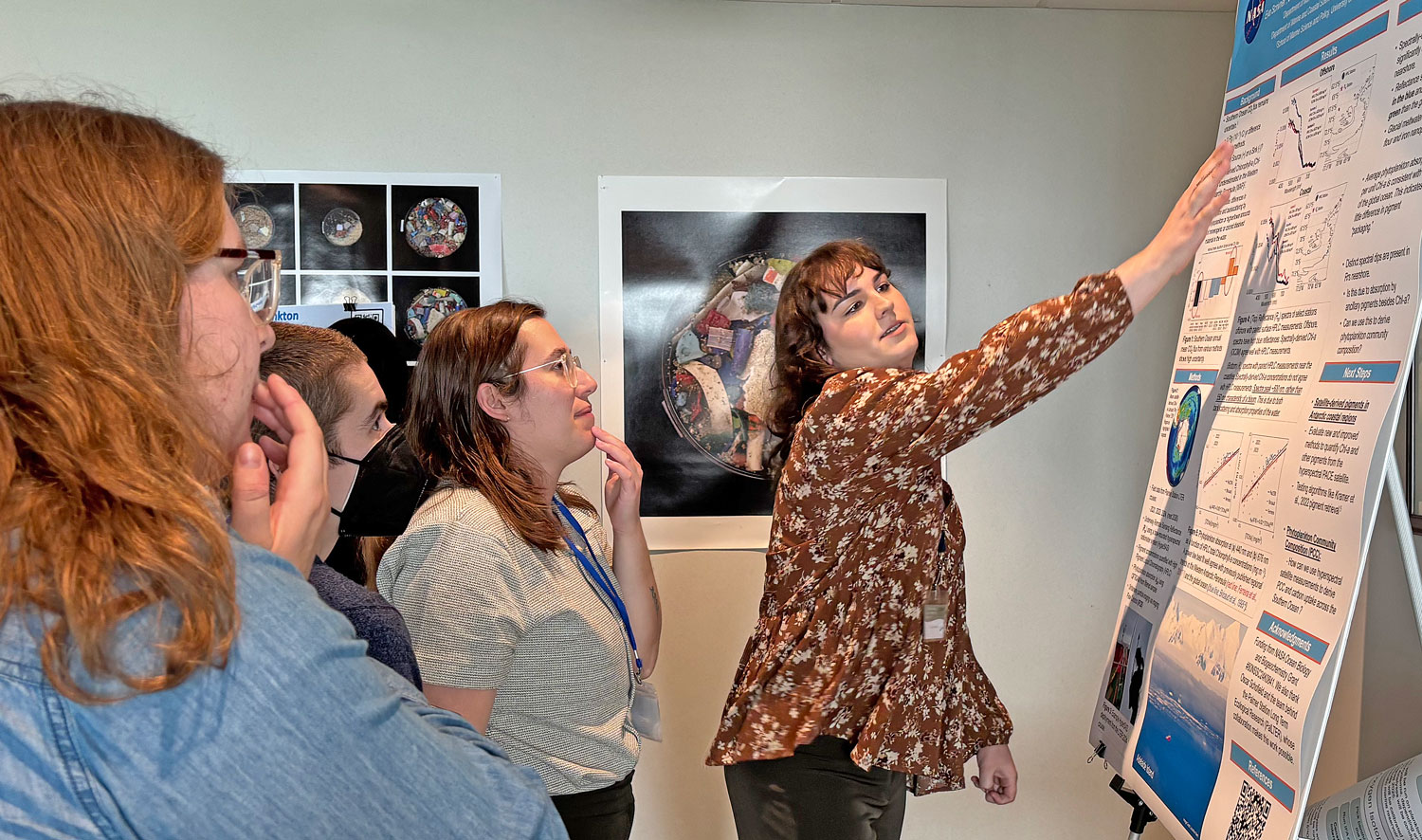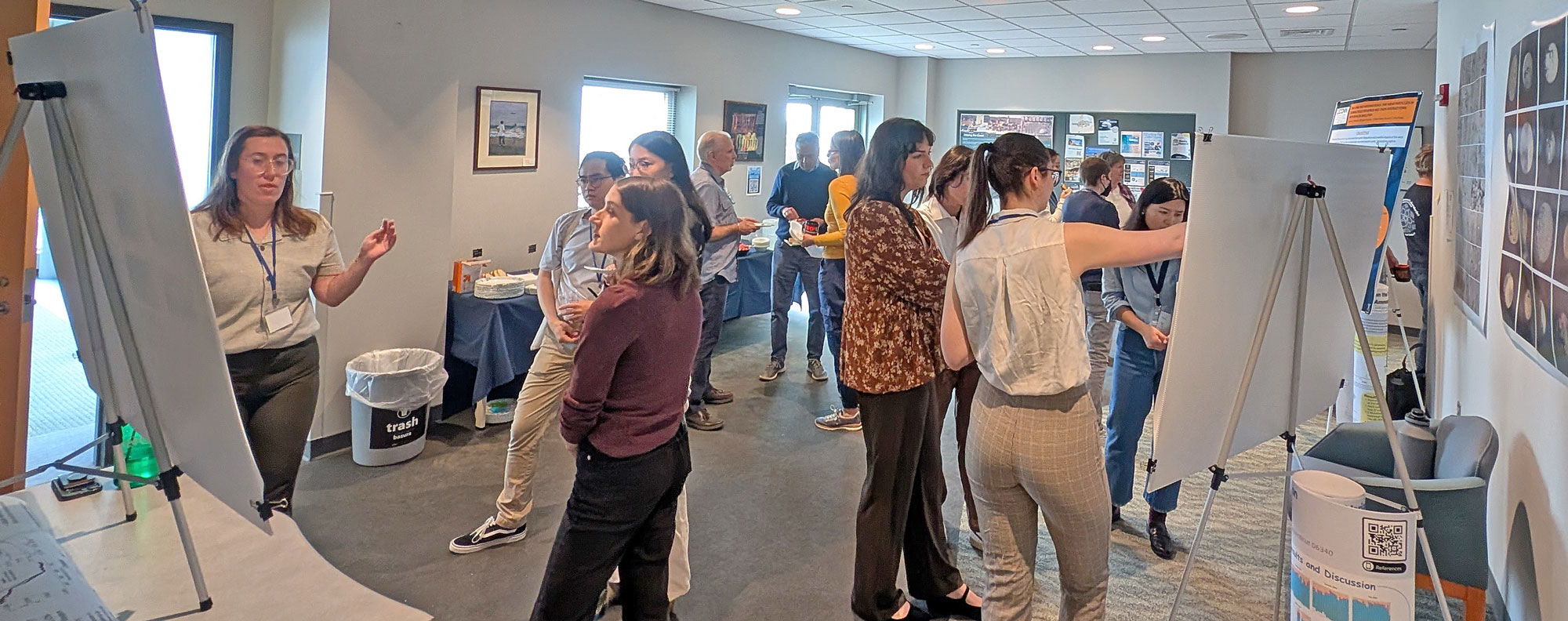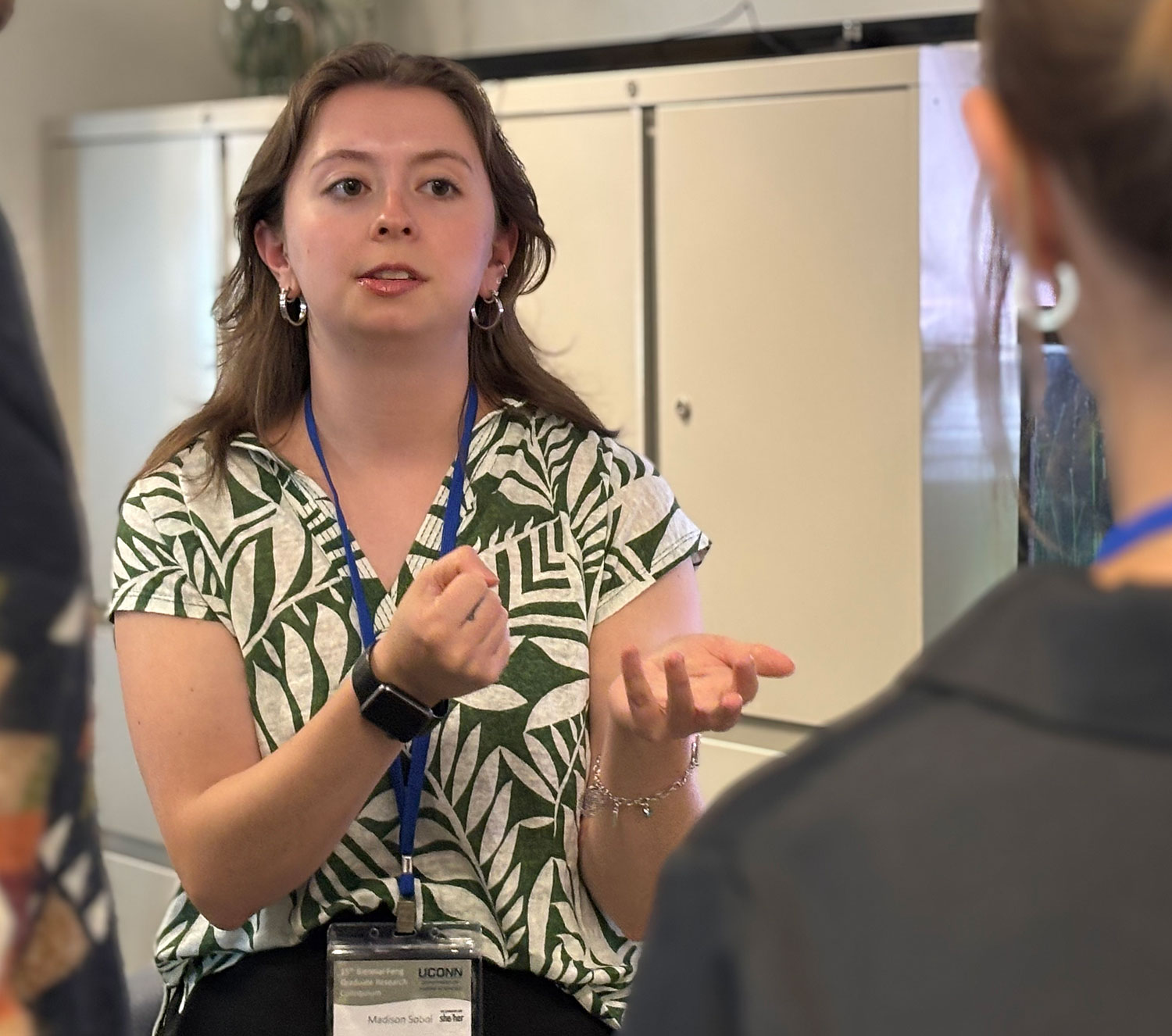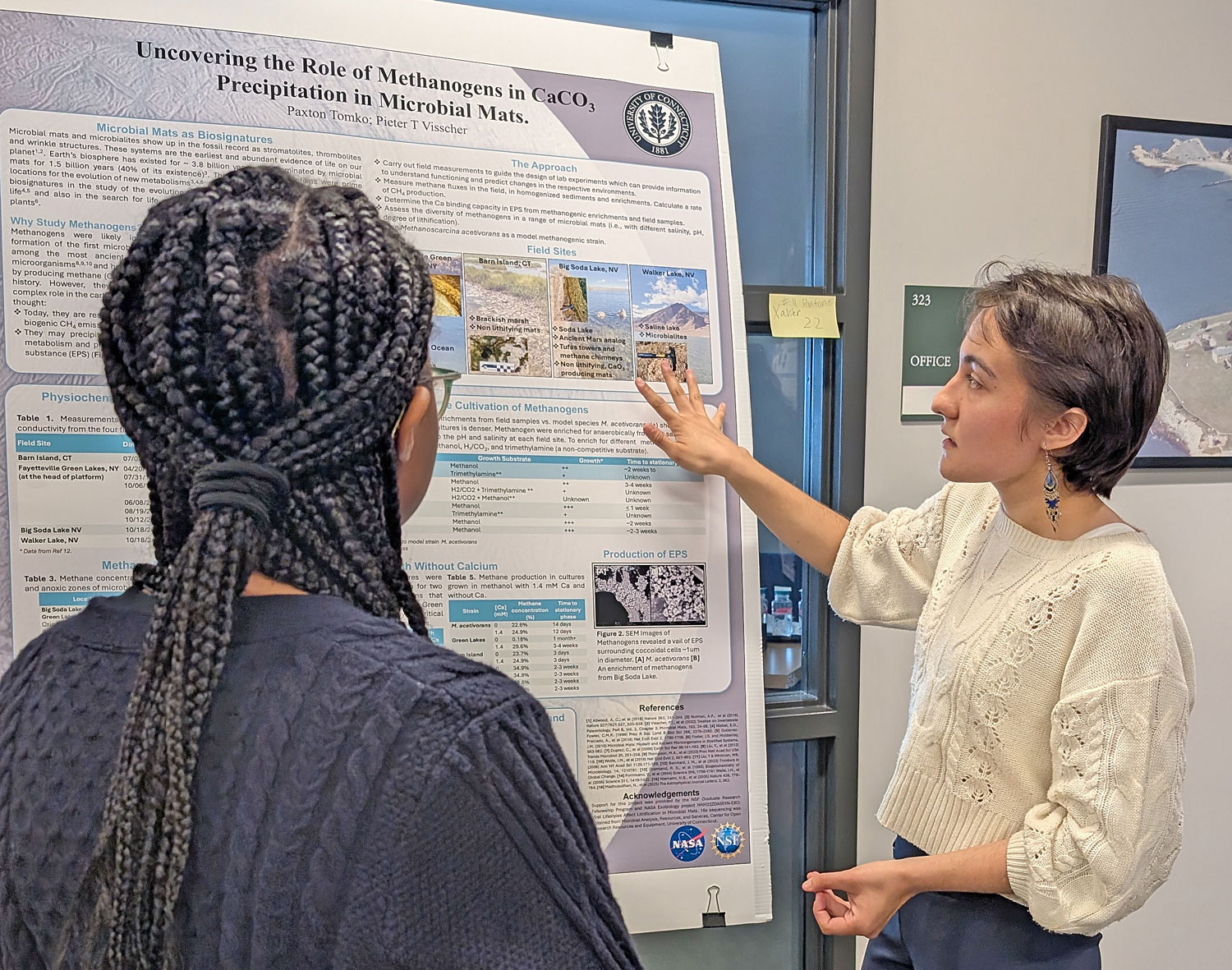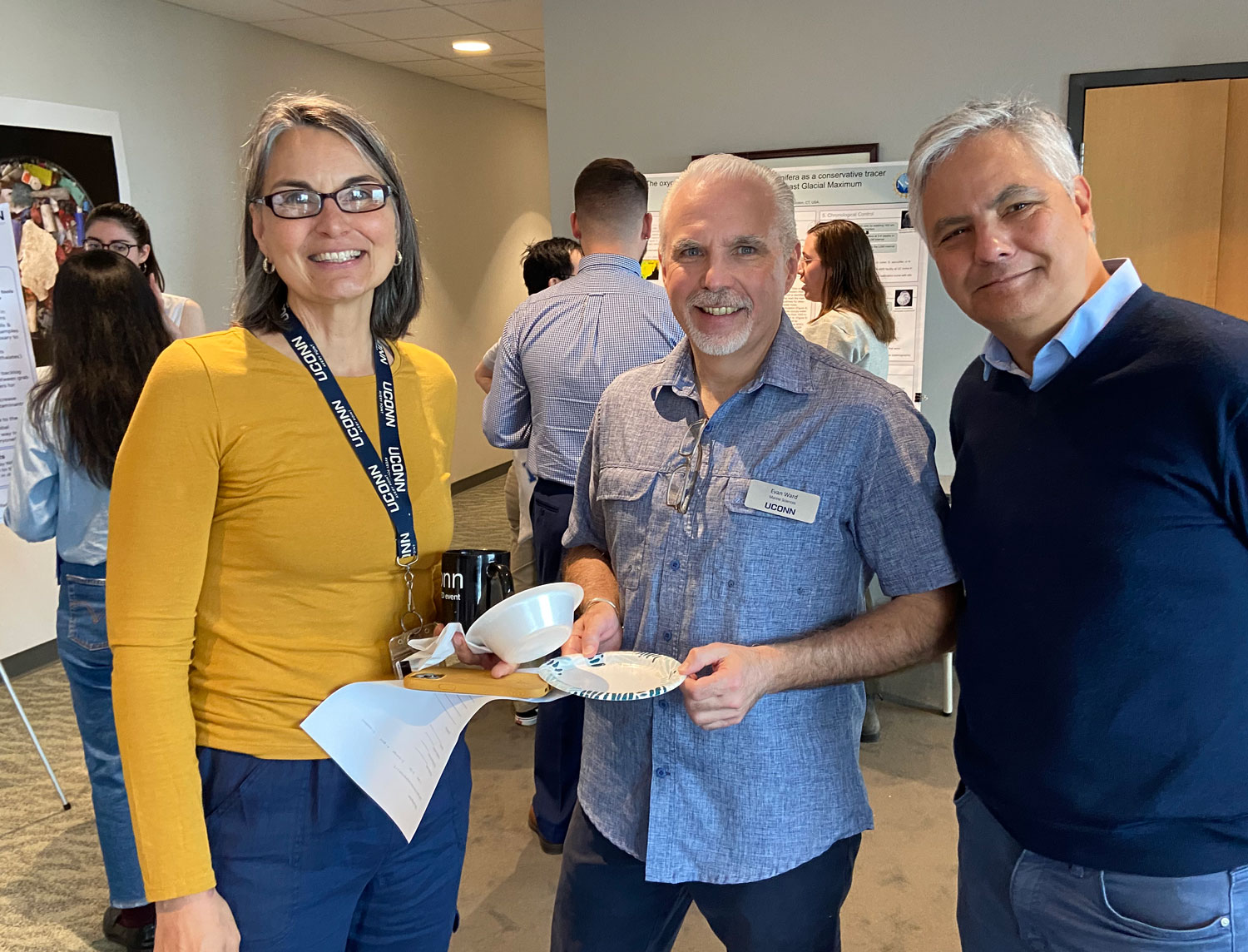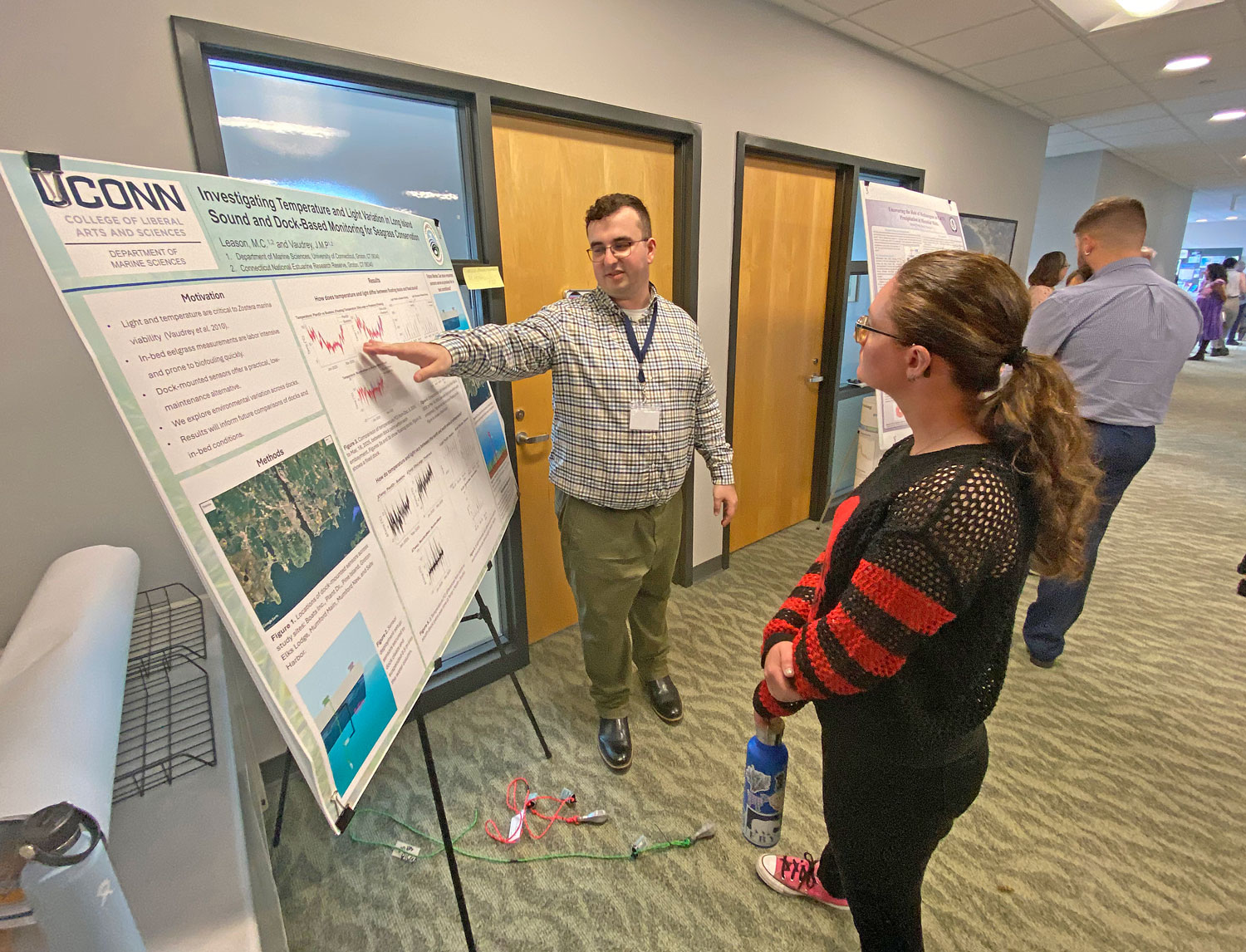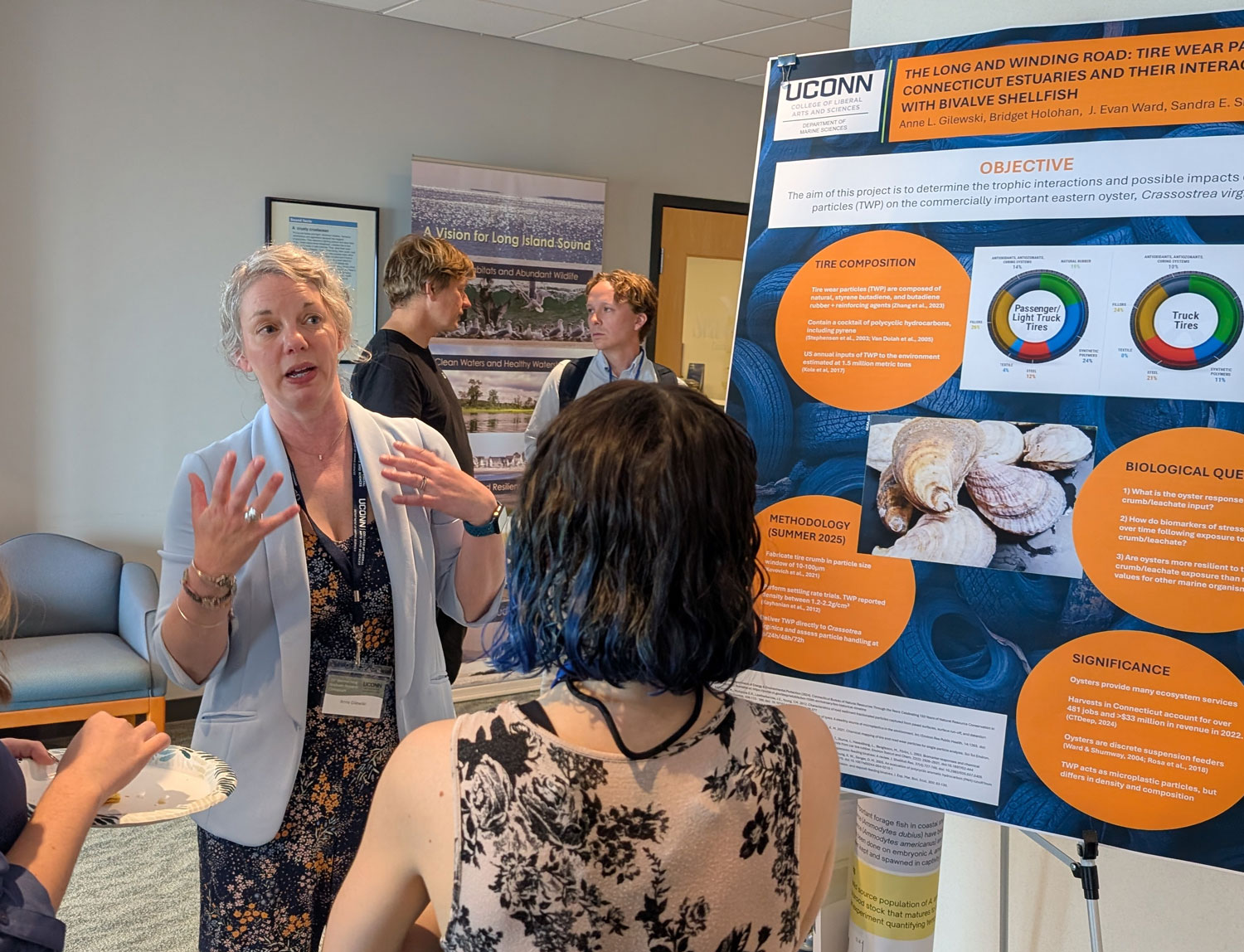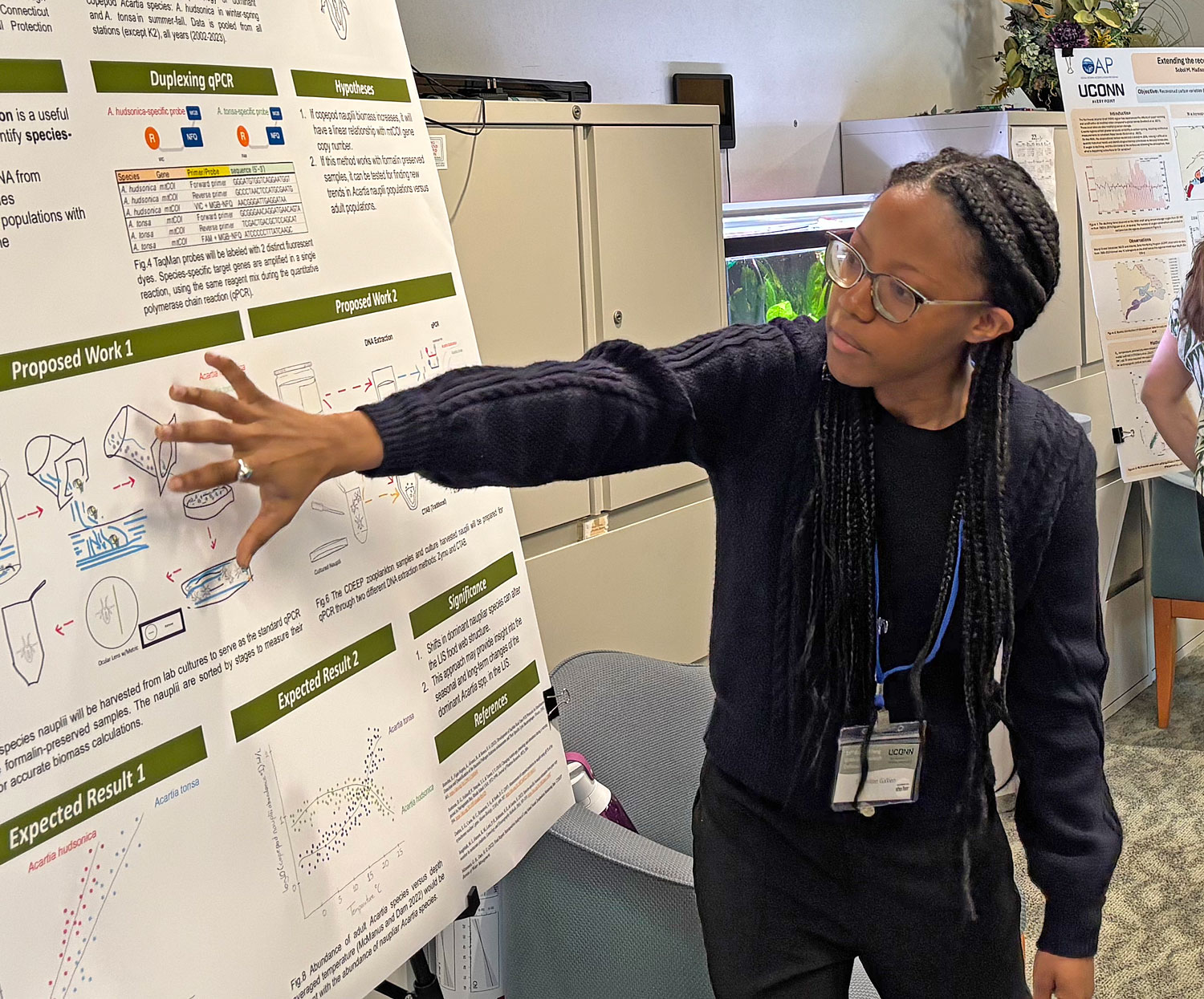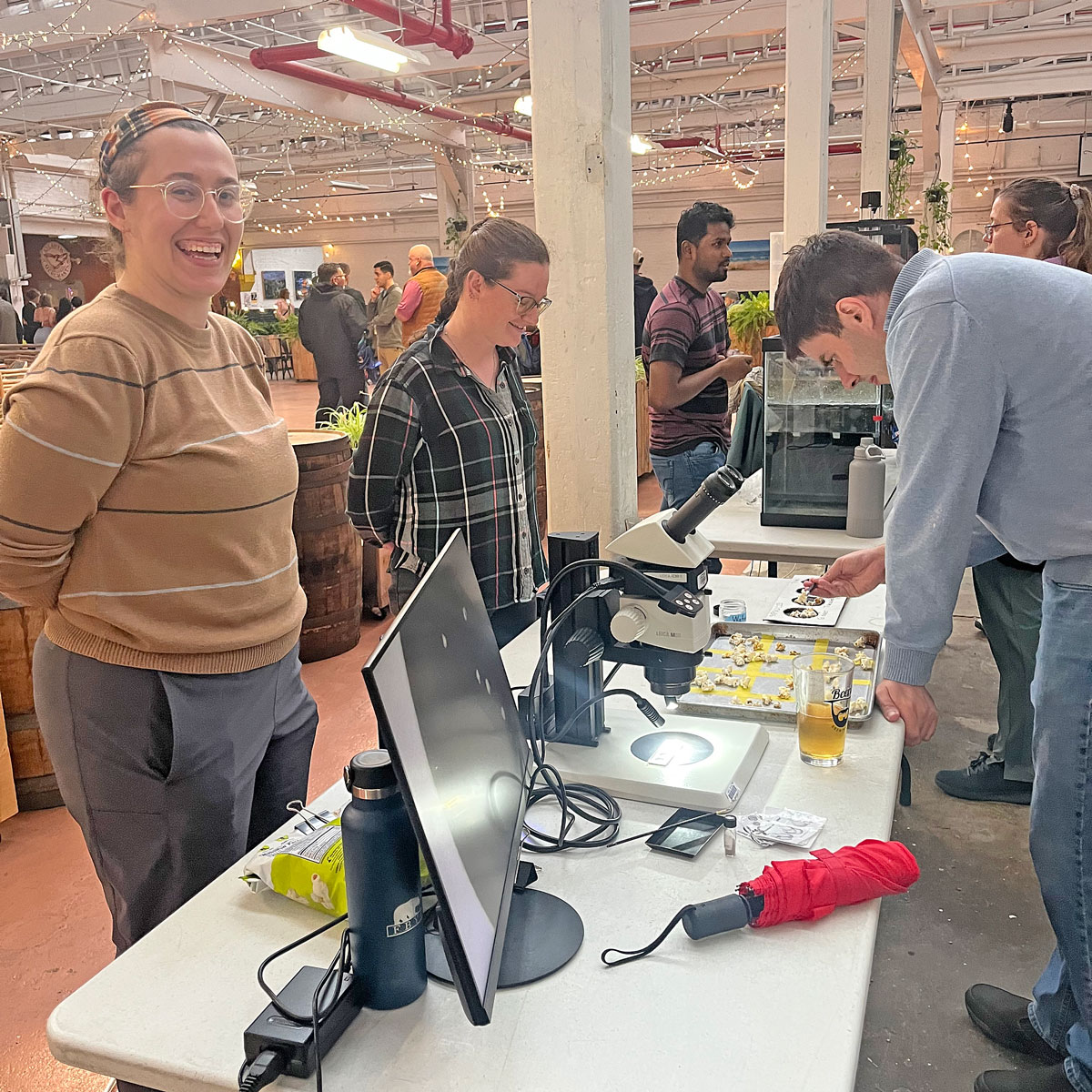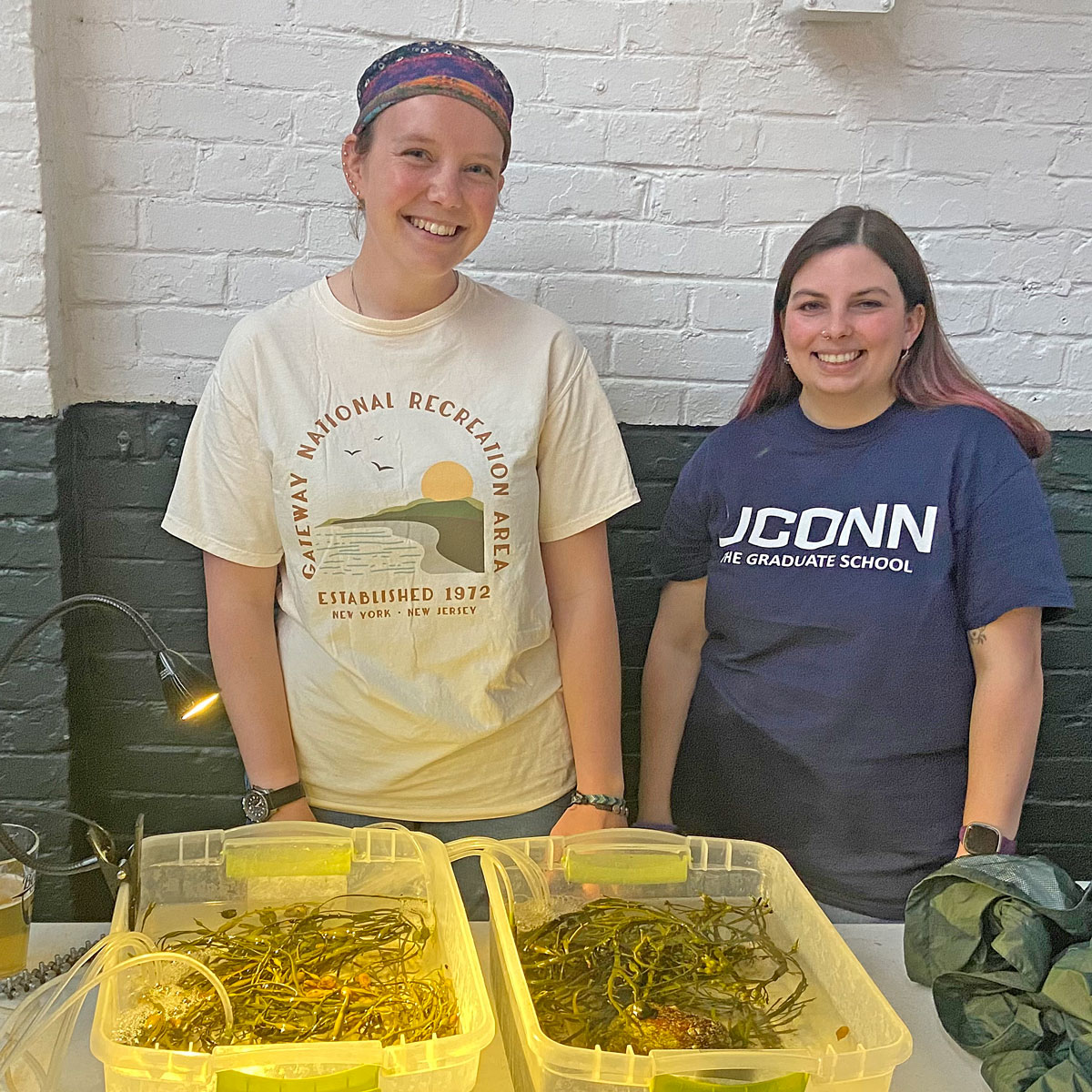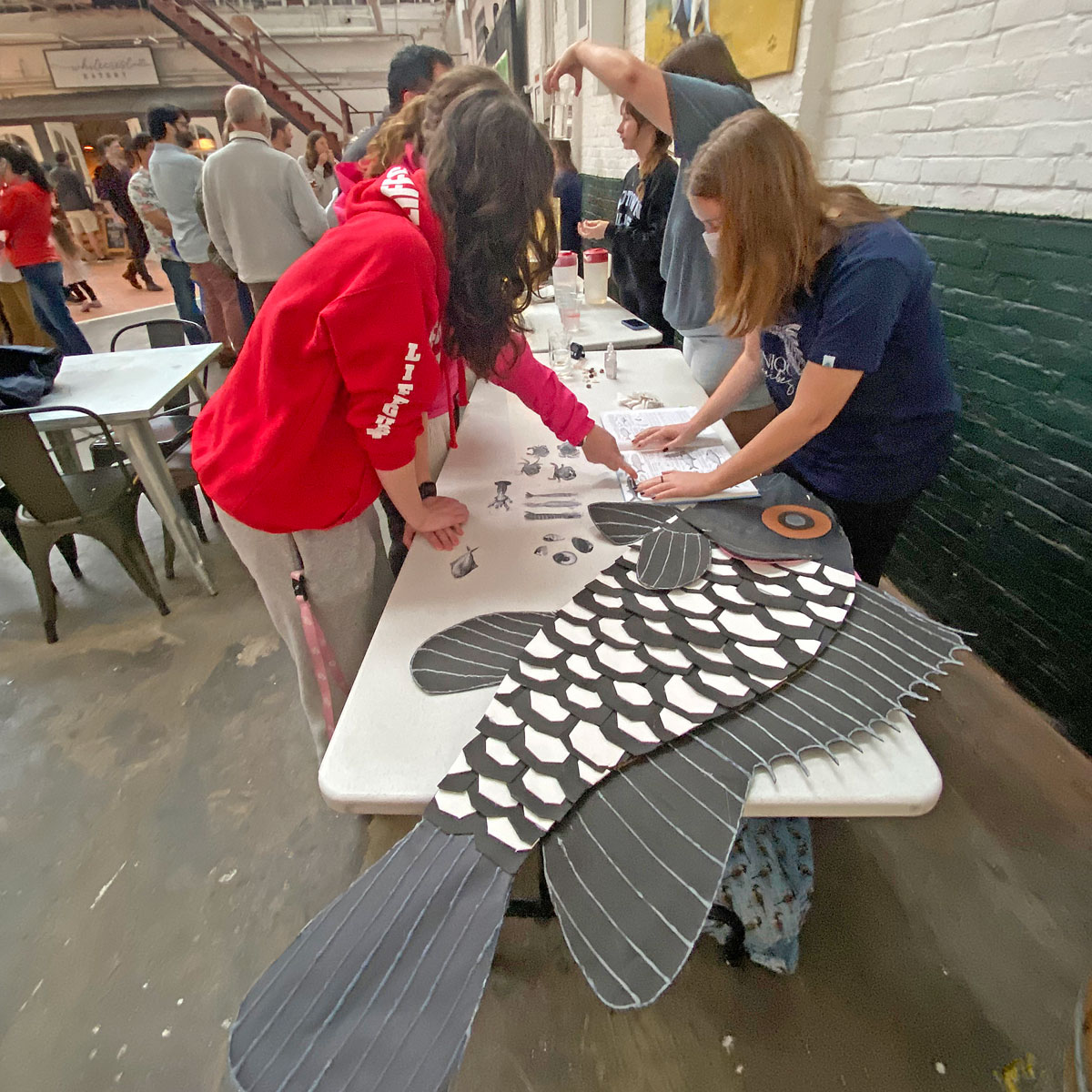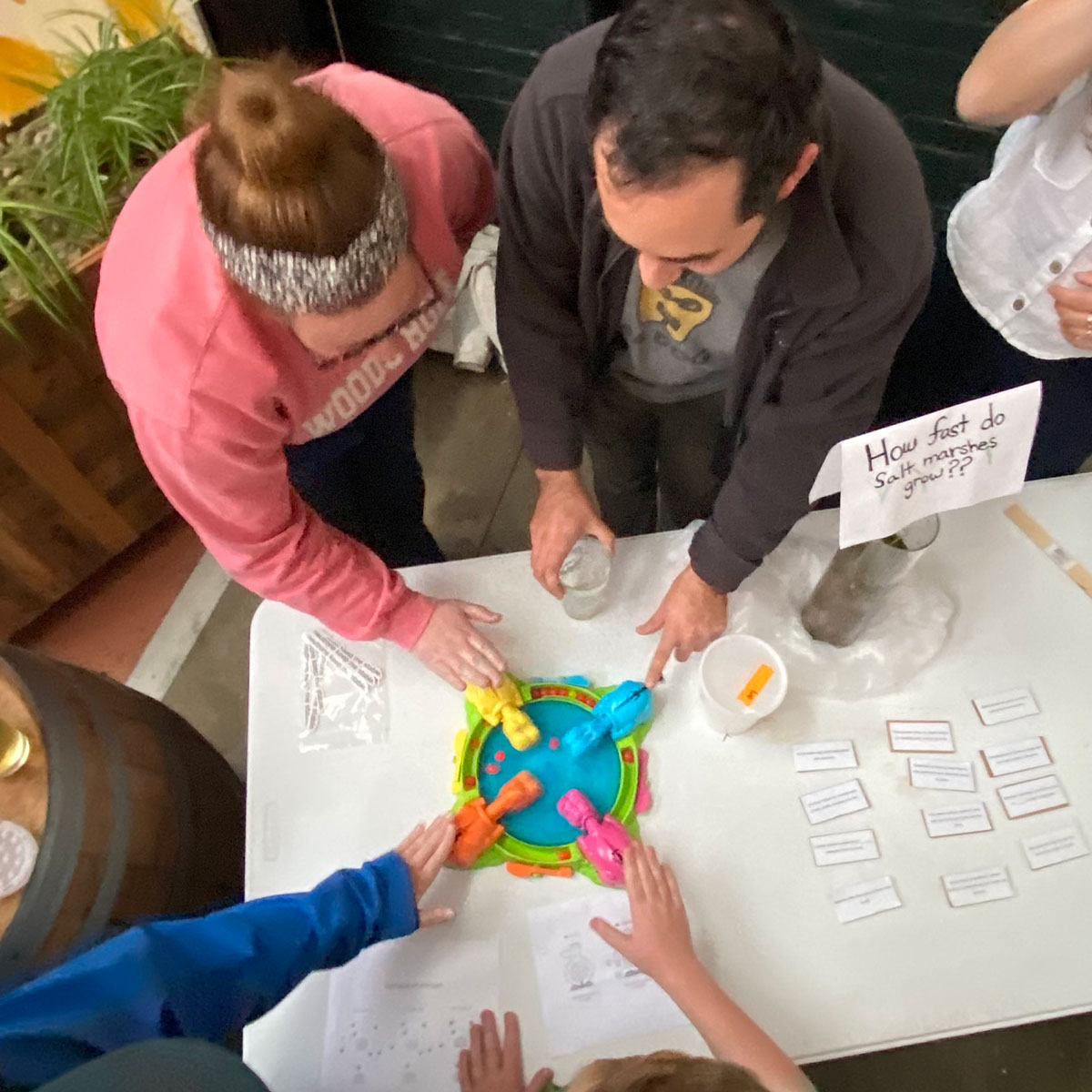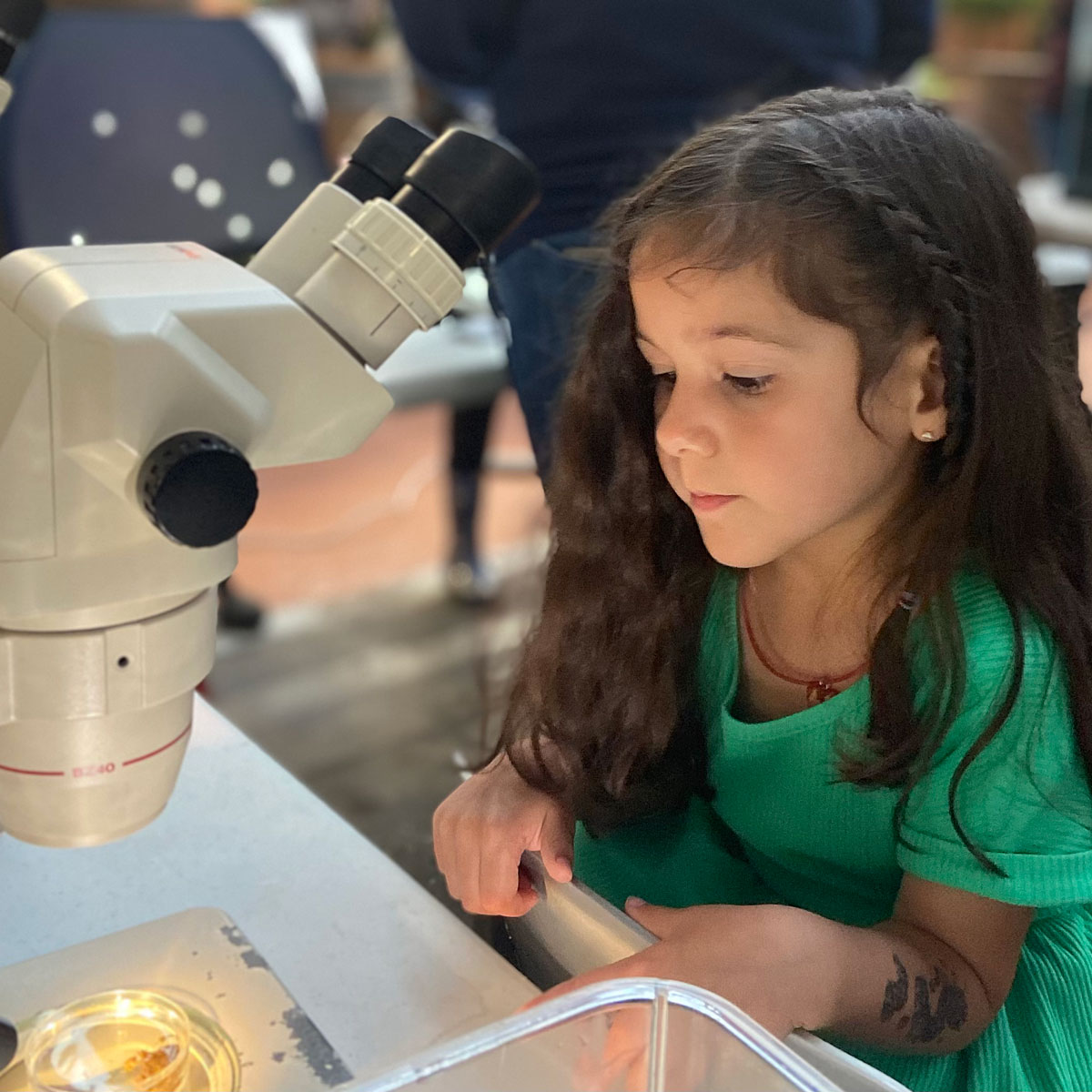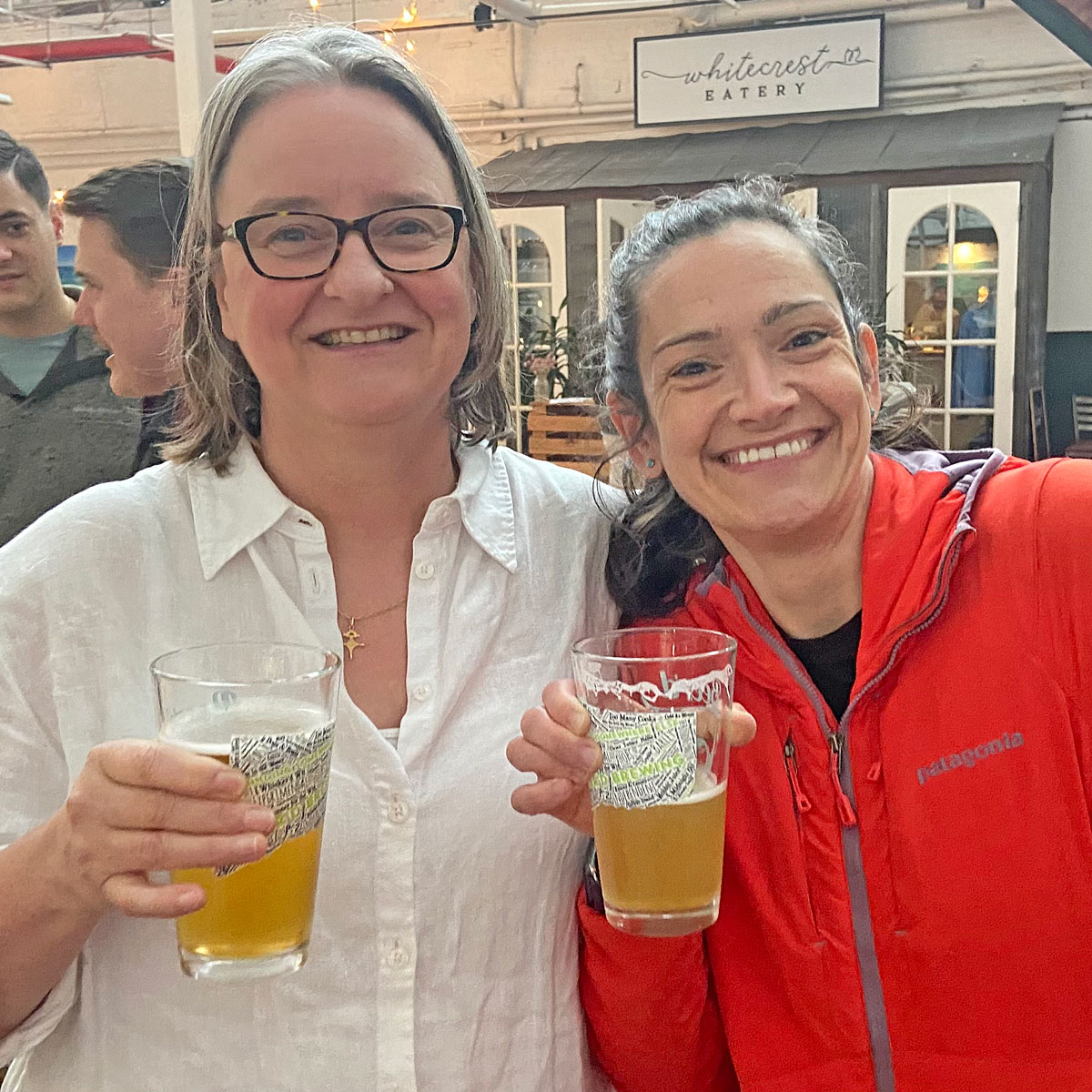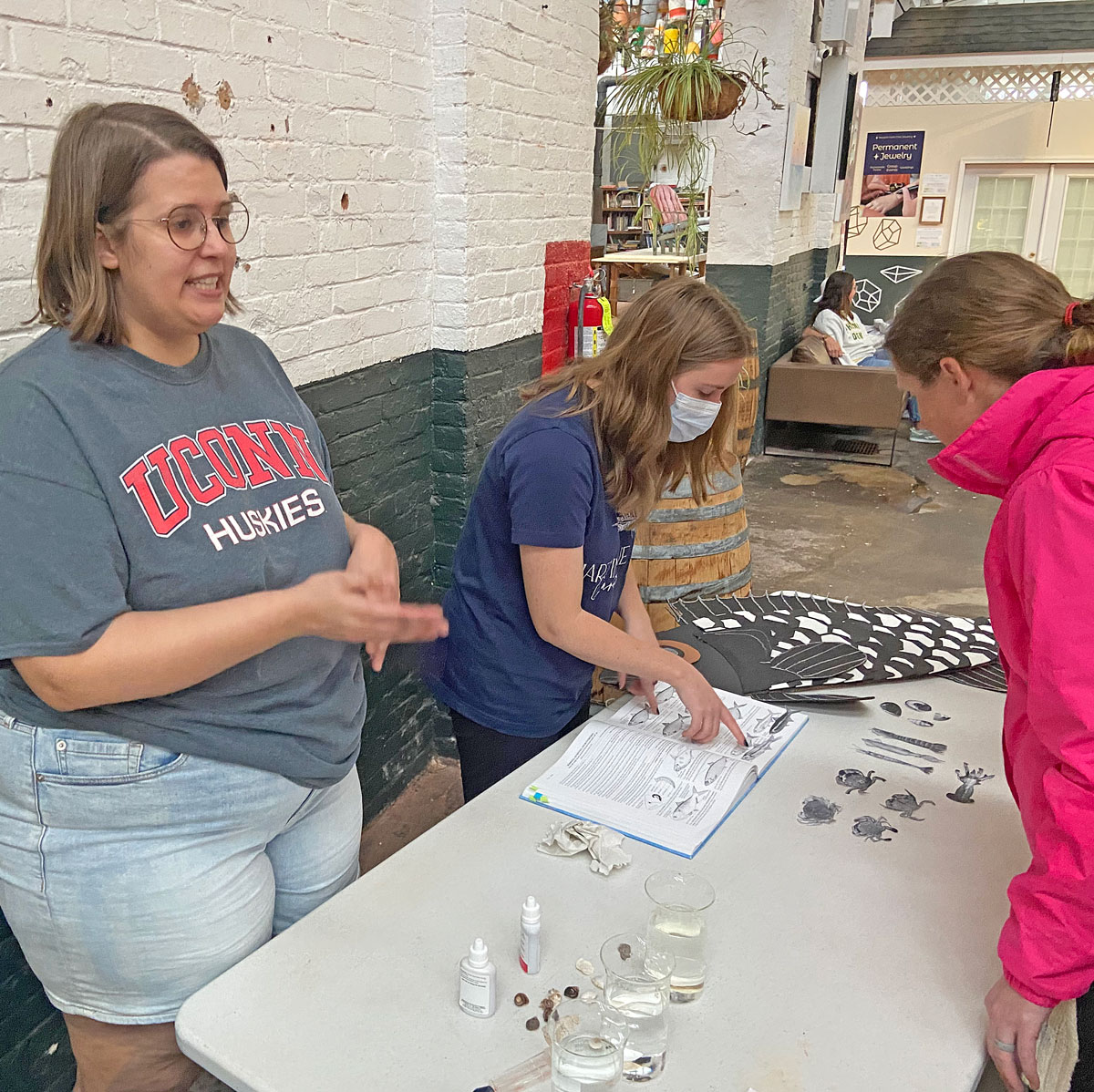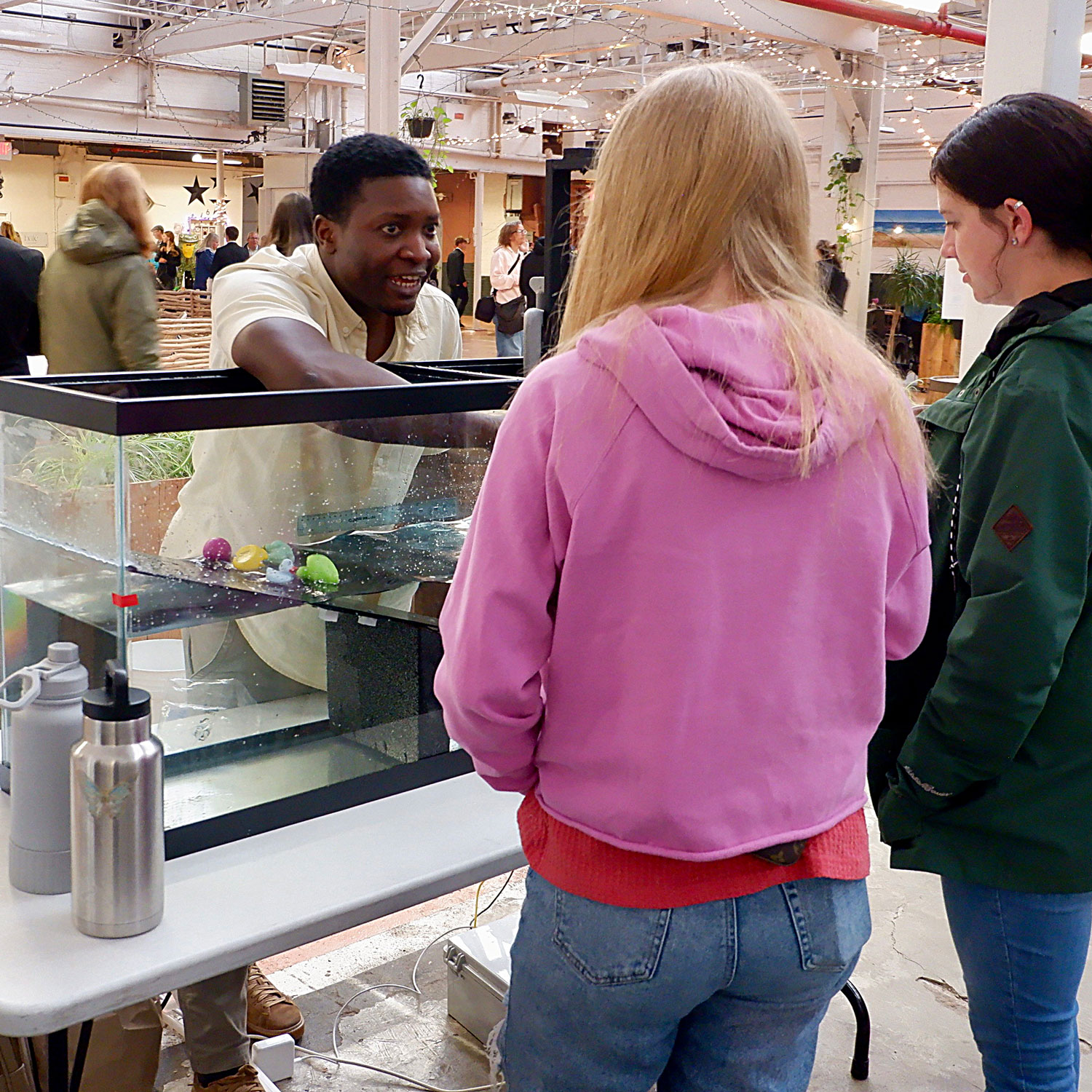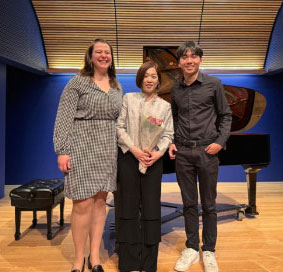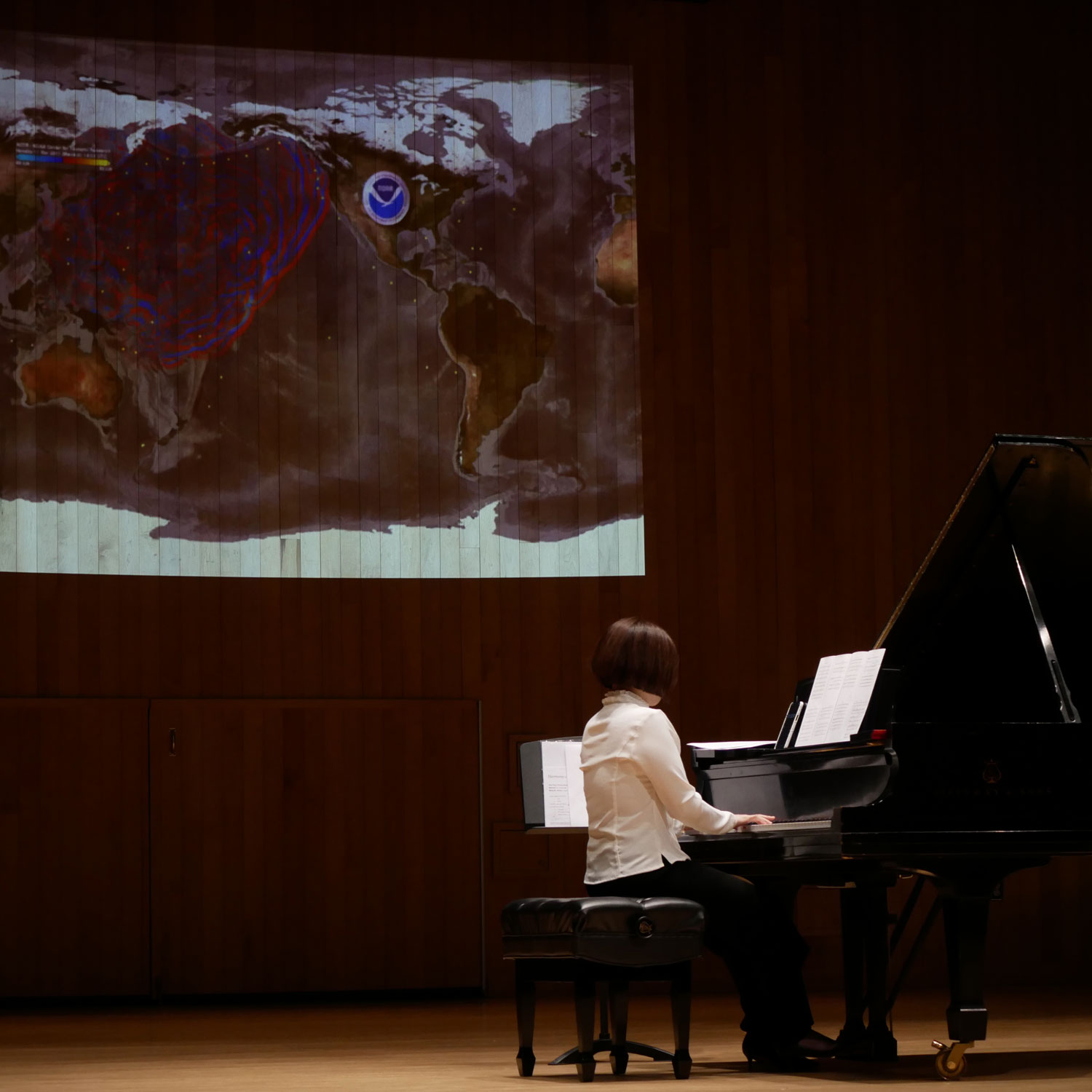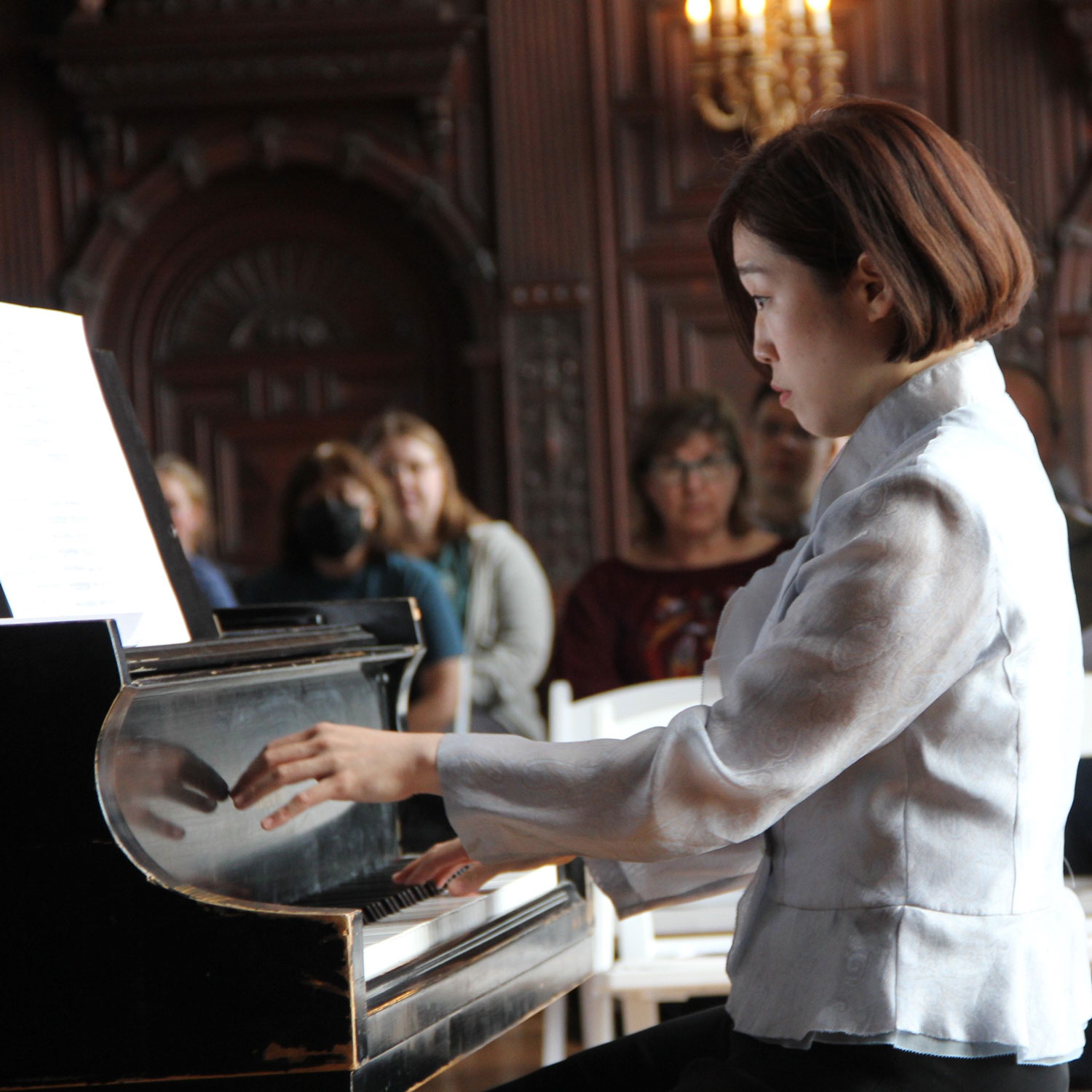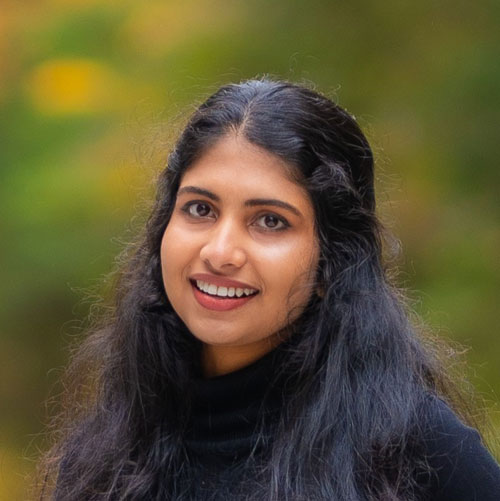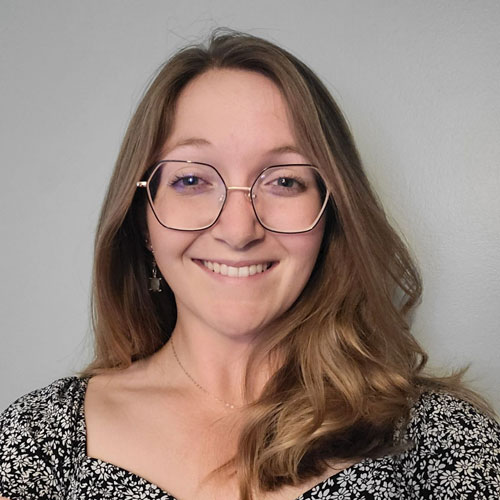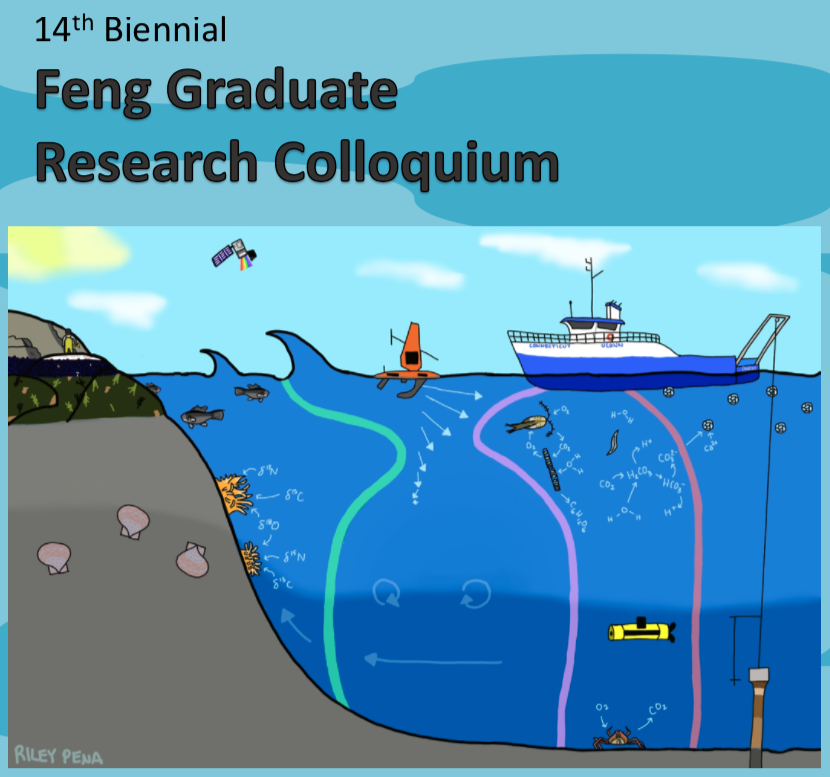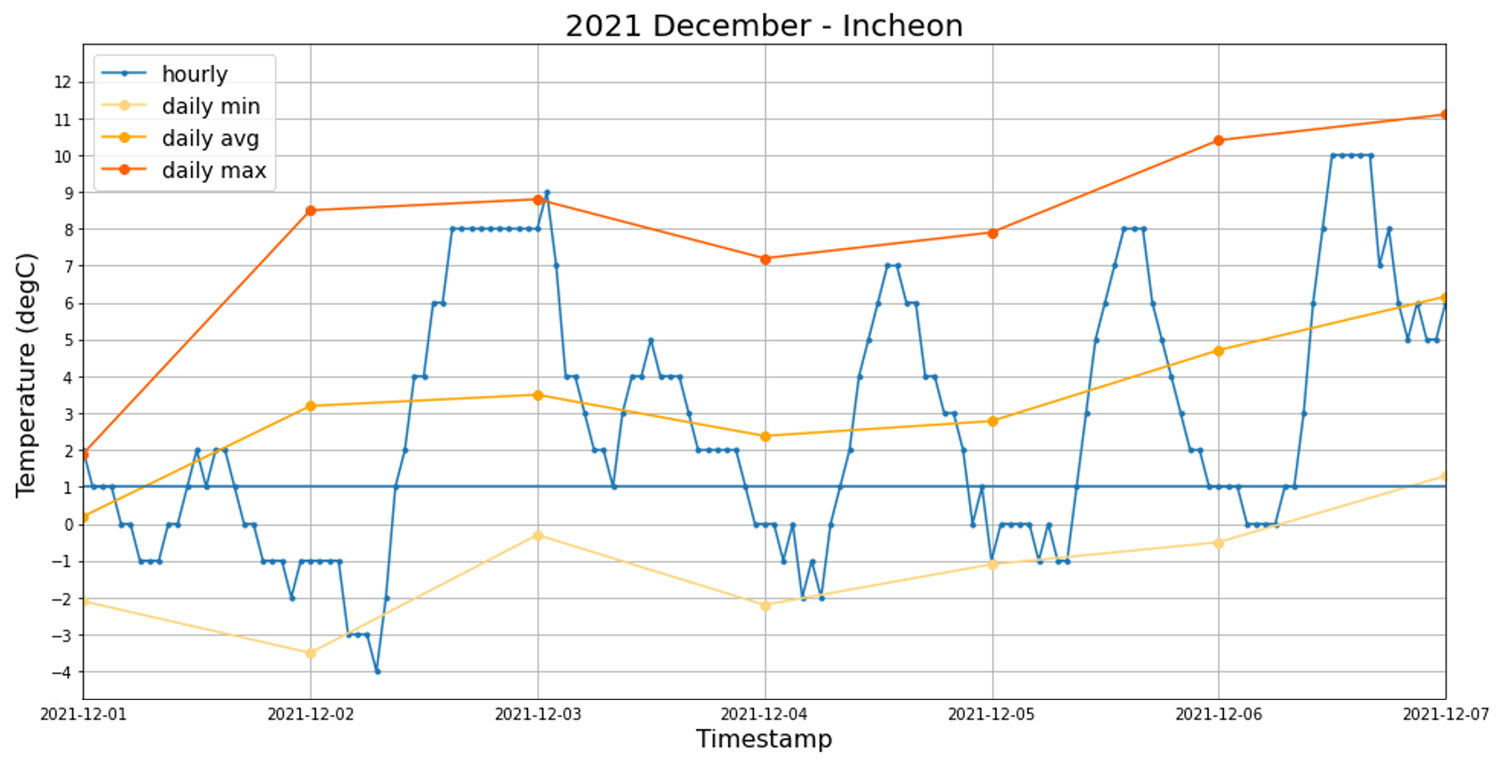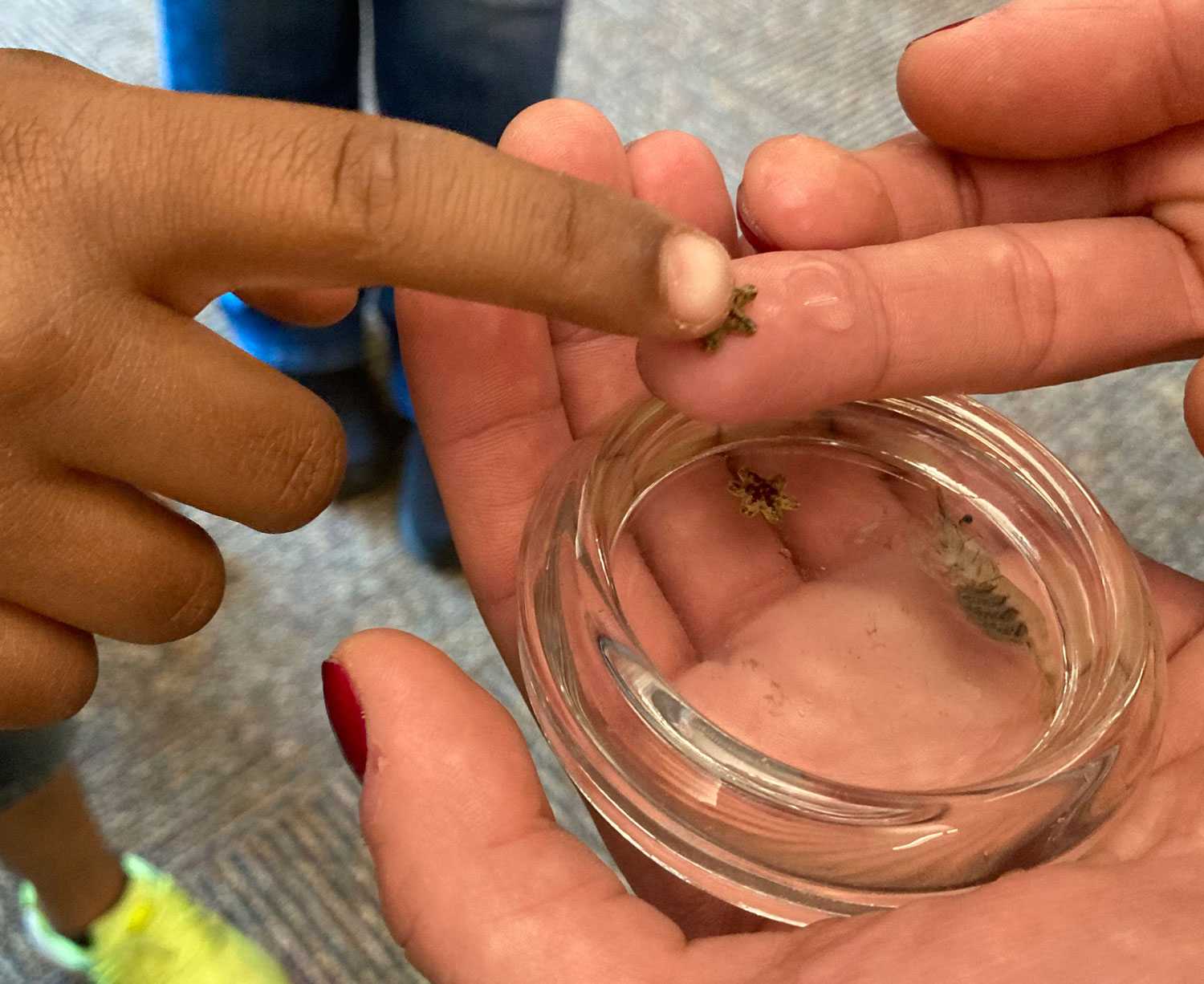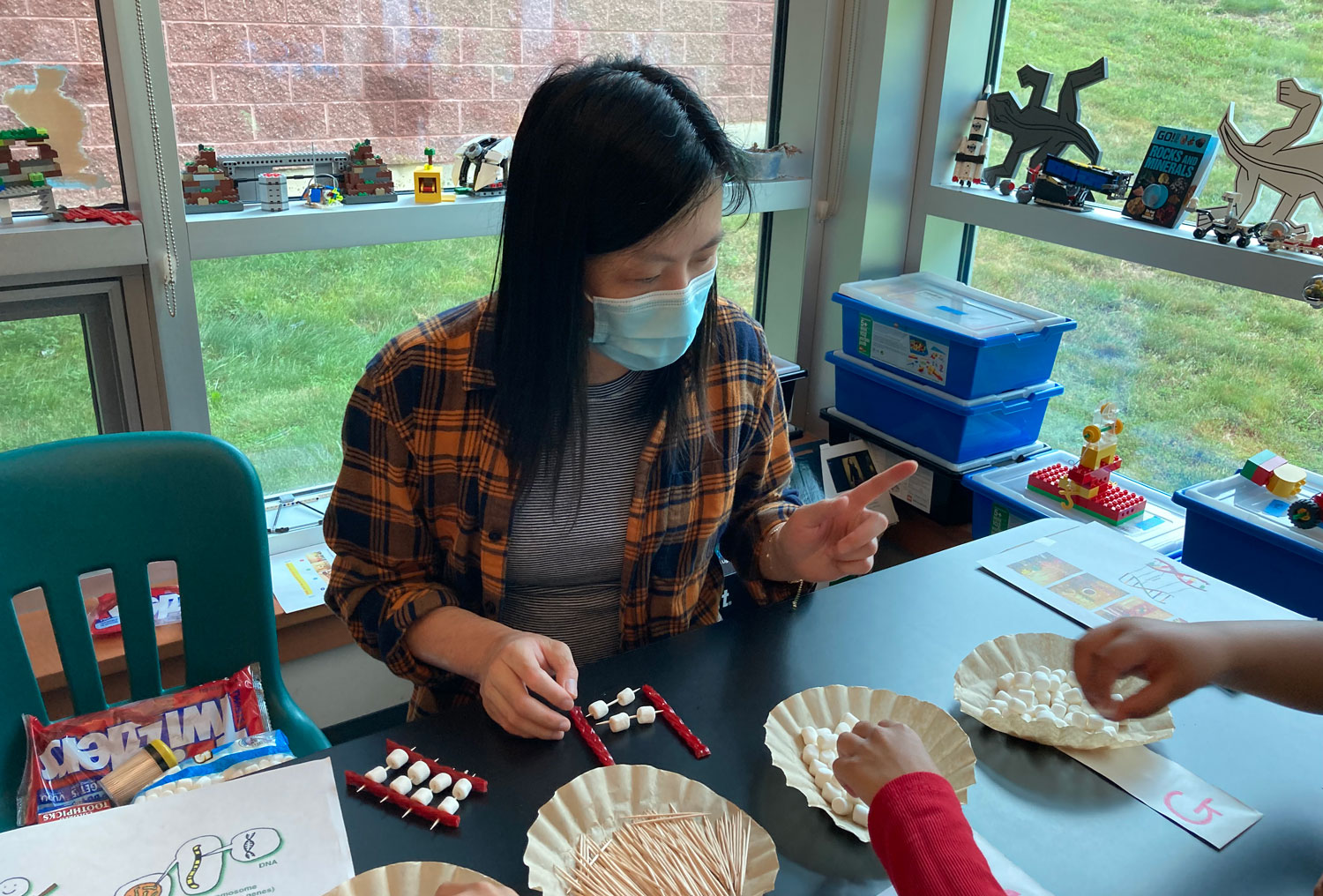By Samantha Rush.
On May 15, 2025, the Department of Marine Sciences hosted the 15th Biennial Feng Graduate Research Colloquium. Named in honor of the first department head, Dr. Sung Y. Feng, the colloquium serves as a professional development event for our departments graduate students, who hone their skills in abstract writing, posters presentations and research talks. This year’s program featured 18 talks and 22 posters showcasing the breadth of multidisciplinary work across the department.
Started by Dr. Hans Dam in 1996, the 2025 Feng Steering Committee included Dr. Julie Granger, Emily Watling, Yifan Zhu, and Anne Gilewski. This year’s event also featured artwork by Matthew Leason and was made possible with the support of DMS staff, particularly Deb Schuler and Todd Fake. The event continues to be a valuable platform for students to hone their scientific communication skills, receive feedback, and share their work across the department.
Check out the talks, posters, and their abstracts here!
